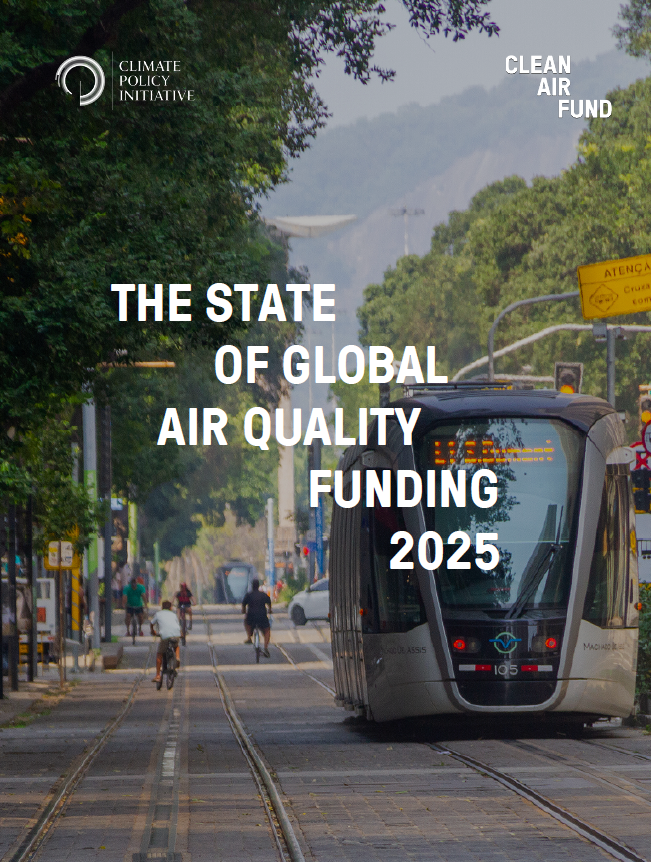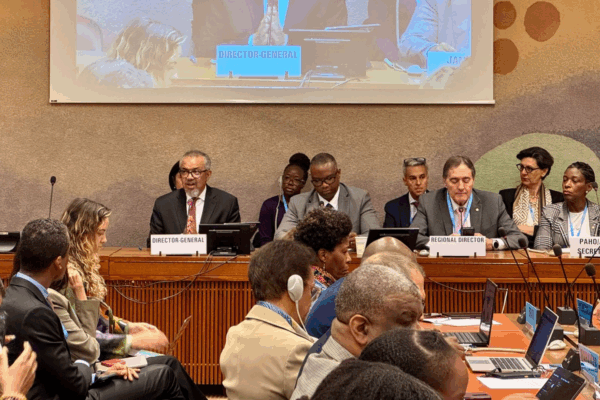
Explore this report
Air pollution is the world’s largest environmental health threat, causing 8.1 million premature deaths every year. Nine in ten of these deaths occur in low- and middle-income countries. Despite this urgent challenge, international funding for clean air from bilateral and multilateral development finance institutions (DFIs) and governments remains chronically low.
In 2019-2023:
1% of international development funding went to clean air projects
2.5x more spent on fossil fuel-prolonging projects than air quality in 2023
Produced with data from Climate Policy Initiative, the seventh edition of our annual report analyses the data on international funding flows up to 2023. We explore how cuts to development budgets, rising fossil fuel-prolonging investments and uneven distribution of funding by donors are undermining progress on clean air.
With aid budgets shrinking and fiscal space tight, each dollar must work harder than ever. Resources must be directed to where they can save the most lives and deliver the greatest benefit. The World Bank has said that targeted action could save more than two million lives annually by 2040 and add up to $2.4 trillion each year to the global economy.
Dion George, South Africa’s Minister of Forestry, Fisheries and the Environment
Clean air is affordable, achievable and delivers immediate benefits for health, climate and economies. This analysis provides recommendations for donors to maximise returns on investments in a constrained funding environment.
1. Outdoor air quality funding fell by 20%
Funding for outdoor air quality action dropped from $4.7 billion in 2022 to $3.7 billion in 2023. From 2019 to 2023, air quality projects made up just 1% of total international development funding.
2. Fossil fuel-prolonging funding surged by 80%
In 2023, funding for projects that extend the use of fossil fuels rose from $5.3 billion to $9.5 billion, more than two and a half times the amount for outdoor air quality pollution. This 80% increase contrasts with the 20% decrease in air quality funding from 2022 to 2023.
Of the 8.1 million premature deaths from air pollution every year, over 5 million are attributed fossil fuel burning. Fossil fuel combustion is also the main driver of climate change, so donors are undermining health and climate progress.
3. The most polluted countries are being left behind
Between 2019 and 2023, 65% of outdoor air quality funding went to just three countries: the Philippines, Bangladesh and China. Meanwhile, seven of the ten countries with the highest air pollution levels received less than $1 per person in 2023.
Sub-Saharan Africa saw a 91% drop in outdoor air quality funding in 2023, receiving less than 1% of all clean air funding globally. The region is experiencing the fastest rate of urbanisation in the world, leaving communities even more vulnerable to increasing air pollution and greenhouse gas emissions. The ten most polluted countries:
4. Growth in funding with air quality co-benefits
Projects with air quality co-benefits received an increase in funding from $27.1 billion in 2022 to $28.8 billion in 2023. These projects are defined as having no explicit air quality objectives but still contribute to reducing air pollution. Examples include electric-vehicle incentive programmes for commercial fleets and projects that promote alternative uses for crop residues to prevent burning.
While this increase is encouraging, this funding could have far greater impact if donors intentionally considered and integrated air quality co-benefits at the project’s design stage.
5. Donors are missing opportunities for a smarter, fairer approach
Evidence from the World Bank shows that integrated air quality and climate policies could save more than 2 million lives annually by 2040 and boost global GDP by up to $2.4 trillion each year. Clean air is a smart investment for development donors to maximise returns on investments in a constrained funding environment. Read our recommendations for donors, including optimising sectoral investments, boosting climate finance, attracting private sector capital and ensuring a just transition from fossil fuels.


